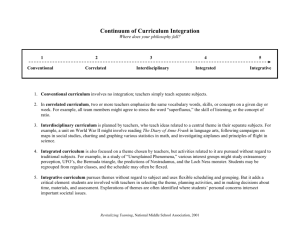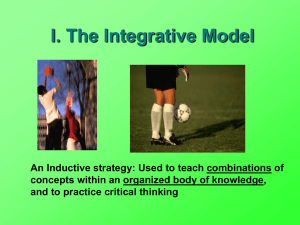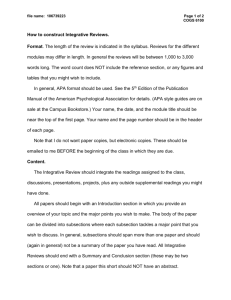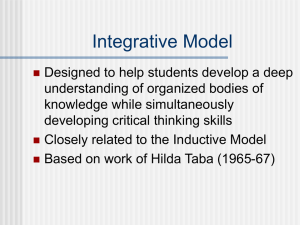IDEATE summary March 2013
advertisement
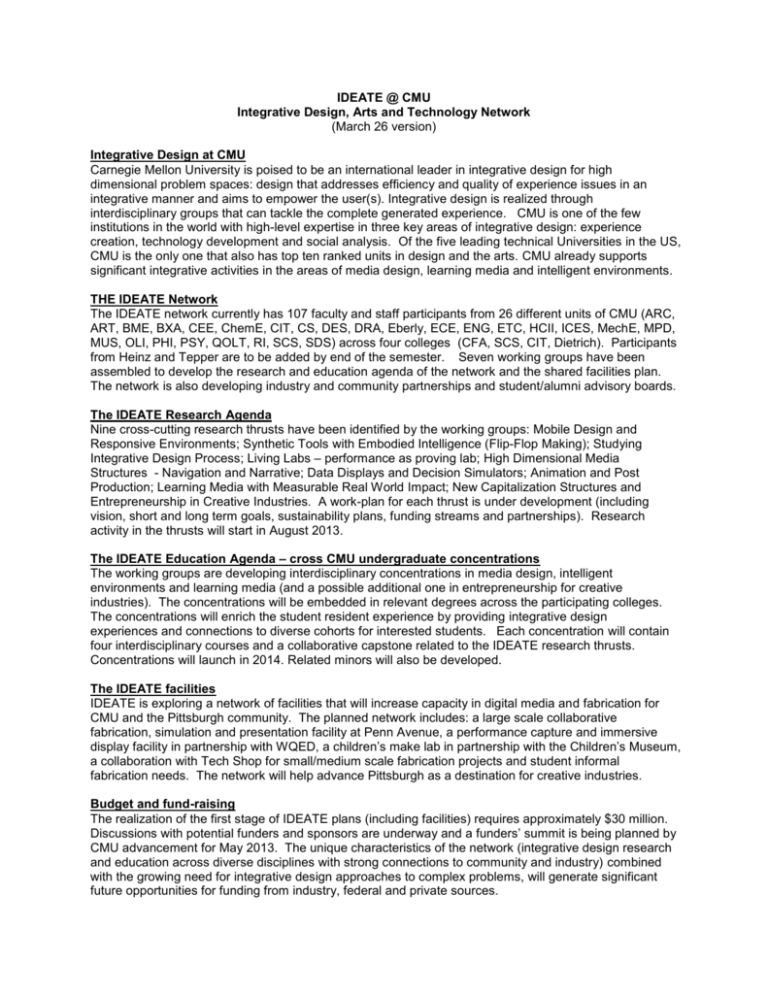
IDEATE @ CMU Integrative Design, Arts and Technology Network (March 26 version) Integrative Design at CMU Carnegie Mellon University is poised to be an international leader in integrative design for high dimensional problem spaces: design that addresses efficiency and quality of experience issues in an integrative manner and aims to empower the user(s). Integrative design is realized through interdisciplinary groups that can tackle the complete generated experience. CMU is one of the few institutions in the world with high-level expertise in three key areas of integrative design: experience creation, technology development and social analysis. Of the five leading technical Universities in the US, CMU is the only one that also has top ten ranked units in design and the arts. CMU already supports significant integrative activities in the areas of media design, learning media and intelligent environments. THE IDEATE Network The IDEATE network currently has 107 faculty and staff participants from 26 different units of CMU (ARC, ART, BME, BXA, CEE, ChemE, CIT, CS, DES, DRA, Eberly, ECE, ENG, ETC, HCII, ICES, MechE, MPD, MUS, OLI, PHI, PSY, QOLT, RI, SCS, SDS) across four colleges (CFA, SCS, CIT, Dietrich). Participants from Heinz and Tepper are to be added by end of the semester. Seven working groups have been assembled to develop the research and education agenda of the network and the shared facilities plan. The network is also developing industry and community partnerships and student/alumni advisory boards. The IDEATE Research Agenda Nine cross-cutting research thrusts have been identified by the working groups: Mobile Design and Responsive Environments; Synthetic Tools with Embodied Intelligence (Flip-Flop Making); Studying Integrative Design Process; Living Labs – performance as proving lab; High Dimensional Media Structures - Navigation and Narrative; Data Displays and Decision Simulators; Animation and Post Production; Learning Media with Measurable Real World Impact; New Capitalization Structures and Entrepreneurship in Creative Industries. A work-plan for each thrust is under development (including vision, short and long term goals, sustainability plans, funding streams and partnerships). Research activity in the thrusts will start in August 2013. The IDEATE Education Agenda – cross CMU undergraduate concentrations The working groups are developing interdisciplinary concentrations in media design, intelligent environments and learning media (and a possible additional one in entrepreneurship for creative industries). The concentrations will be embedded in relevant degrees across the participating colleges. The concentrations will enrich the student resident experience by providing integrative design experiences and connections to diverse cohorts for interested students. Each concentration will contain four interdisciplinary courses and a collaborative capstone related to the IDEATE research thrusts. Concentrations will launch in 2014. Related minors will also be developed. The IDEATE facilities IDEATE is exploring a network of facilities that will increase capacity in digital media and fabrication for CMU and the Pittsburgh community. The planned network includes: a large scale collaborative fabrication, simulation and presentation facility at Penn Avenue, a performance capture and immersive display facility in partnership with WQED, a children’s make lab in partnership with the Children’s Museum, a collaboration with Tech Shop for small/medium scale fabrication projects and student informal fabrication needs. The network will help advance Pittsburgh as a destination for creative industries. Budget and fund-raising The realization of the first stage of IDEATE plans (including facilities) requires approximately $30 million. Discussions with potential funders and sponsors are underway and a funders’ summit is being planned by CMU advancement for May 2013. The unique characteristics of the network (integrative design research and education across diverse disciplines with strong connections to community and industry) combined with the growing need for integrative design approaches to complex problems, will generate significant future opportunities for funding from industry, federal and private sources.

